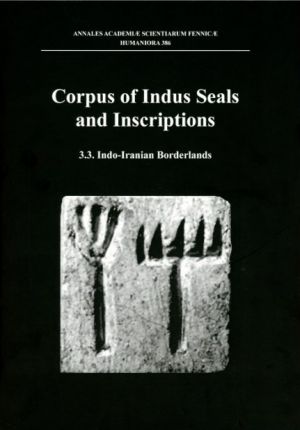Suomalainen Tiedeakatemia
Annales Academiae Scientiarum Fennicae. Humaniora 386
What is the purpose and scope of the Corpus of Indus Seals and Inscriptions (CISI)? Why should all the about 2350 non-Harappan seals, inscriptions and other objects from the "Indo-Iranian Borderlands" published in this volume appear in that series?
The Harappan/Indus Civilization (2600-1900 BCE) is one of the earliest urban cultures of the world, but in comparison to its counterparts in Mesopotamia and Egypt, little is known about its language, literature, religion, social structure, and many other things. It had a unique script of its own, and thousands of short inscriptions have survived, but the script vanished when the Indus Civilization collapsed. There is no such key as the Rosetta Stone, which opened up the secrets of the hieroglyphic writing. This does not mean that one cannot gain some understanding of the Indus script, but the problem is to be approached with proper methodical framework. The Indus script is most likely a logo-syllabic writing system like all the other earliest scripts, basically pictographic and using the rebus principle to express phonetic shapes of words. Starting from this hypothesis it has been possible to propose externally and internally cross-checked decipherment proposals for some two dozen signs and to identify the language underlying the script as Proto-Dravidian (Parpola 1994 - for the literature referred to in this preface, see the bibliography p. 530ff.).
A serious study of the Indus script requires access to all available material in good images. More than half of the Indus texts have been carved on small stone seals, which usually have some iconographic motif in addition to the text: normally there is a realistically depicted animal, but also for instance anthropomorphic figures probably representing divinities. Actually these small seals are our principal sources of Harappan art and religion. In this respect, even seals without script, also those having just geometric or other symbols, contain valuable information. The seals contribute to knowledge about Haruppan administration, trade routes, crafts, and so on, by their find places, their material, and methods of manufacture. Another major inscriptional category consists of graffiti, texts incised on pottery and also singly occurring "potter's marks", which are no real "texts", but convey some information and are a possible source for script signs.













